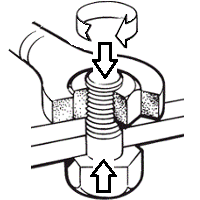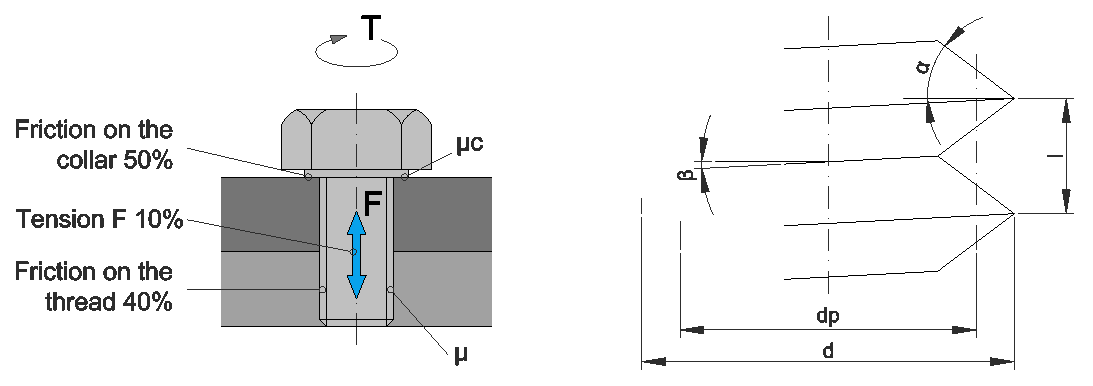Bolt axial force vs torque
The torque required to tighten the bolt:
Where:
T: Torque (N.m)
K: Torque coefficient
F: Axial preload force (N)
d: Nominal bolt diameter (mm)
The torque coefficient:
Where:
l: Lead (mm)
α: Half angle of the screw thread (°)
d: Nominal bolt diameter (mm)
µ: Thread friction coefficient
µc: Collar friction coefficient
Common torque coefficient values for µ=µc=0.15:
| Bolt condition | K |
| Non plated black finish steel bolts | 0.3 |
| Mild steel bolts | 0.2 |
| Zinc plated steel bolts | 0.2 |
| Lubricated steel bolts | 0.18 |
| Cadmium plated steel bolts | 0.16 |
| With bowman anti-seize | 0.12 |
| With bowman-grip nuts | 0.09 |
It is estimated that roughly 90% of the input energy is lost in overcoming the mating friction under the head (collar) and between the thread or nut and its mating threads. Consequently only the remaining 10% of input energy is turned into bolt stretch.


